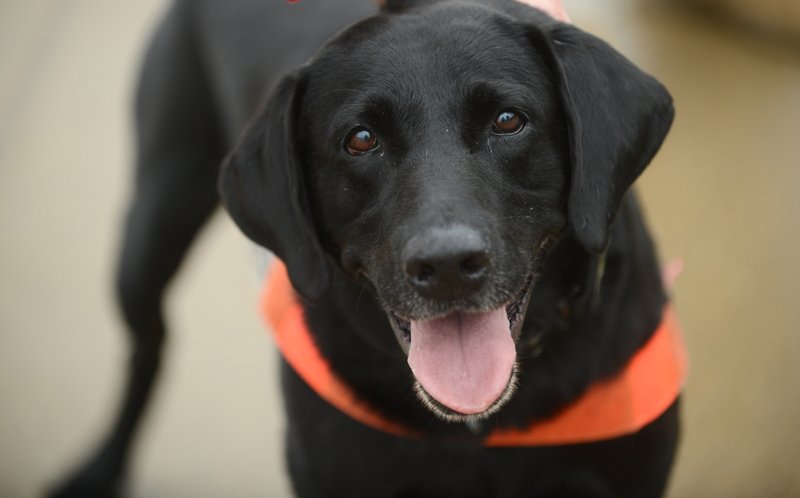The dogs deployed by the Transportation Security Administration at airports nationwide use their noses to sniff out explosives and contraband. But pooches selected for duty these days are picked not just for the ability of their snouts — the shape of their ears matters, too.
TSA officials say the agency is increasingly replacing retired pointy-eared dogs — think German shepherds — with floppy-eared sorts including Labrador retrievers. The recruits have a friendlier look, officials say.
"We find the passenger acceptance of floppy-ear dogs is just better. It presents just a little bit less of a concern," TSA Administrator David Pekoske told the Washington Examiner during a recent tour at Washington Dulles International Airport. "Doesn't scare children."
About 1,200 TSA dogs from seven breeds are used to screen U.S. passengers and baggage, TSA spokesman James Gregory told The Washington Post. Five are breeds whose ears rest softly on their heads: Labs, golden retrievers, German short-haired pointers, wire-haired pointers and Vizslas. Two have ears that shoot skyward: German shepherds and Belgian Malinoises.
But about four in five recent additions to the canine corps are of the droopy-eared persuasion, and the agency hopes to stick to that ratio, Gregory said. The consideration of ear position, he added, was an informal internal decision "that is more about adapting to people's perceptions about floppy-eared dogs (sporting breeds) being more friendly versus pointy-eared dogs (herding dog breeds) that may appear to be more aggressive-looking."
This doggy development made a splash on social media, where some observers greeted it as a welcome gesture from an agency not often lauded for its consideration of traveler sentiments. Others decried it as "canine racism," not to mention a misplaced focus on dogs when barking TSA agents are a more common complaint, and offered up photos of perfectly nice-looking dogs with pointy ears.
Still others pointed out that these dogs, which typically wear "Do not pet" vests, are not supposed to be approachable.
"No petting, but there's a balance," Gregory said. "We don't want people to shy away because they're scared."
The agency's understanding of passenger views on detection dog ears is anecdotal and not based on survey data, Gregory said. But some research backs up the idea that people view pointy ears as more intimidating. In a 2016 study on perceptions of dogs with docked tails and cropped ears -- or cut to stand up, as is typical on breeds such as the Doberman pinscher — University of British Columbia researchers found that participants deemed altered dogs more aggressive and dominant than those with natural features.
Traditional detection dogs don't necessarily have stronger sniffers. Clive Wynne, a University of Arizona canine science scholar, noted that a study he published on dogs' olfactory sensitivity found that pugs performed "way better" than German shepherds, meaning "friendly-looking dogs can be perfectly suited to this task."
Which is why the primary requirement for TSA dogs remains stellar detection skill, Gregory said. As many as half of aspiring working dogs fail out of training programs.
"No dogs will be pulled off because they have pointy ears. All the dogs are good — as long as they pass the test," Gregory said. "It's stringent, and we put them through extremely difficult tests... . But at the end of the day, the dog's going to be out there because they're qualified, not because of their breed."
Travel on 01/20/2019
